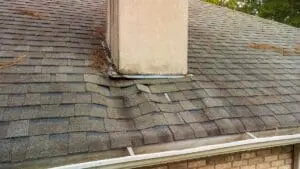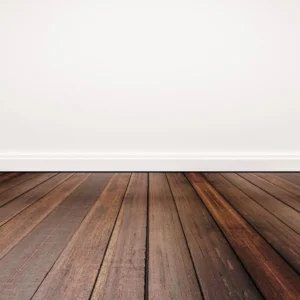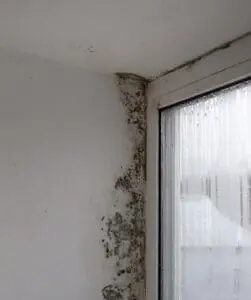Before PureDry ever makes it onto the scene, there are many mistakes you can make as a homeowner in the flood restoration process. These mistakes aren’t always with malintent. Usually, homeowners are unaware of what it takes to restore a water-deteriorated home fully. They lead with the best intentions, and yet, floods still destroy everything in their path.
At PureDry, we aim to provide you with the vital information you need to properly avoid malpractice in the restoration process, such as creating an additional opening for water to sneak in or ineffectively repairing a burst pipe. Take on water damage with confidence by partnering with us at PureDry to pass along our years of experience and knowledge before we make it on-site to address damages.
The Difference Between Water Damage and Flood Damage
The difference between water damage and flood damage seems to be a commonly confusing topic for unsuspecting homeowners, as they assume the two types of damage are essentially the same thing. When filing claims with insurance, this distinction becomes imperative. Some damages covered under your insurance providers’ water damage insurance will not cover flood damage, and vice versa. File claims with intention by allowing PureDry to explain the difference in detail.
Water Damage
It comes down to the source of the damage when creating a distinction between water damage and flood damage. Water damage is usually caused by an overflow of water from a plumbing outlet, such as a broken pipe or overflowing sink. Water damage does not include weather-induced water damage.
Flood Damage
Flood damage, specifically when filing claims, is any water damage compiled by naturally occurring forces such as floods, hurricanes, and heavy rain. Coverage for flood damage can only be directly attributed to obvious signs of structural damage, as most internal damages would fall under water damage.
What about Damage from Storms or Rain?
Although storms can cause major flooding, they aren’t universally covered under flood damage. Storm damage exists in its insurance category, either privately sought out or covered by your home insurance. Storms can carry an influx of wind, a facet of insurance that’s also privately covered: wind insurance.
Storms look like an umbrella category for those looking to streamline their insurance coverage post-damage, but it is unfortunately never that simple. Ask your water damage restoration specialist (such as us at PureDry) to sort out the details of what would be covered for your specific situation. We can help explain why your specific storm exposure is or isn’t covered under your home insurance policy.
What causes Flood Damage?
Flood damage is defined by the amount of water that has entered a property. If it is enough to create a surge, then it will most likely be respected as flood damage. Water has to be strong and voluminous enough to push, break, or crack a structure for it to be removed from the water damage category. Most flood damages are caused by weather extremities, such as hurricanes that produce a natural influx of strong water. If your property lacks a sufficient system to funnel water away, it will most likely sit in the flood damage category.
Common Mistakes During Flood Damage Restoration
The reason so many homeowners fall prey to the perplexing presence of water damage is that they lack the knowledge needed to successfully restore their property. In flood damage restoration, you have to act fast. Whether it be with a professional restoration service or a DIY restoration process, you need to be prepared to move quickly and with intent. We recommend contacting us at PureDry for a more detailed explanation of what needs to be done, although we emphasize these points for successful home restoration:
Delaying the Restoration Process
As previously mentioned, speed is pivotal. Remain knowledgeable enough about restoration to be able to act quickly. The quicker you can mitigate the flow of water, you can shut out any further damage until your home or business can be examined by a professional restoration service provider.
Failing to Document the Damage
Make sure you have somewhere to take down the details of the water damage, as documenting the severity of the damage will aid you in creating future claims. Your insurance provider will want to know exactly what the water touched, how powerful it was, and where it came from. Any missed information will delay the claim process.
Neglecting Safety Measures
Although you will be conducting the restoration process in a place that may feel safe to you, you still need to implement safety measures as you will be engulfed by contaminated water, debris, and possibly outdoor materials. People neglect safety measures because they think they can ‘handle’ the presence of stormwater. Don’t let storm damage outsmart you by protecting your body from contaminants.
Insufficient Water Extraction
Because a lot of homeowners are not equipped with an expert restoration eye, they miss small areas where water has absorbed itself into the corners of their homes. Insufficient water extraction allows time for water to spread further, creating space in your walls or ceiling for mold growth within 48 hours. Being aware of the tiny ways in which water can spread is the first step to remediating this common mistake.
Inadequate Drying
DIY drying processes aren’t nearly as effective as a professional drying service because homeowners lack the high-power tools needed to fully dry a water-damaged surface. Most home drying techniques are done by household fans or whatever air-blowing tool can be found lying around. Half-baked drying is another common conduit for mold to appear.
Ignoring Hidden Damage
Most homeowners are not technically skilled enough to spot underlying damage to their home or business. This is not to say that they aren’t capable of completing a restoration process, but that they simply don’t have the expertise needed to spot micro signs of damage.
DIY Repairs without Expertise
If you’re conducting a home restoration process, make it your mission to conduct informed, intentional repairs based on technique rather than efficiency. It may seem attractive to perform a series of repairs with what’s available, but these can become counterproductive as they may create further issues that require professional attention.
Neglecting Mold Remediation
Mold isn’t necessarily gone for good if you do put all necessary drying procedures in place. Mold remediation can be done through a series of dehumidifying and sanitization methods. The tools and solutions for these aren’t commonplace, so this is where a professional mold remediation service becomes imperative.
Overlooking Electrical System Inspection
If the water surged into your property is elevated enough to reach your electrical system, it has easily created rust and corrosion. These issues may seem fairly easy to mitigate, but a corroded system may require a replacement depending on the severity. Don’t neglect to check your electric system in depth as a part of your water damage restoration process.
Failing to Prevent Future Flood Damage
Quickly completing a set of restoration methods that solely ‘clear out’ the damage without implementing a series of preventative measures defeats the purpose of restoration in its entirety Yes, restoration does focus on extraction in the early stages, but most homeowners neglect to close those vulnerable areas before the next storm hits.
THE FLOOD CLEANUP PROCESS
Straight-forward, intentional, and meticulous, our PureDry Flood Cleanup Process is made to effectively remove all signs of lingering water damage post-flood. We intend to restore the sanctity of your property so you can return with a clear, stress-free mind.
Our tried PureDry Flood Cleanup Process consists of 4 water-resistant steps:
- Dry & Sanitize: Extract all signs of water presence and dry the impacted areas. A sanitization round will directly follow drying to block out developing mold.
2. Deodorize: Improve air quality immediately by removing all lingering musty or moldy smells throughout the property.
3. Clean: All remaining materials brought in by surging water will be removed, and all effected areas will be cleaned.
4. Repair: We will reform all water-impacted areas of your property, from bedroom walls to kitchen floors.
At PureDry, we understand just how emotionally trying complex water damage can be. That’s why we prioritize your mental and physical safety during every step of our superior water damage restoration process. You’ll find your newly cleaned property in pristine condition, making the transition back to reality seamless. Call us today for comprehensive services ranging from maintenance to emergency repairs.



